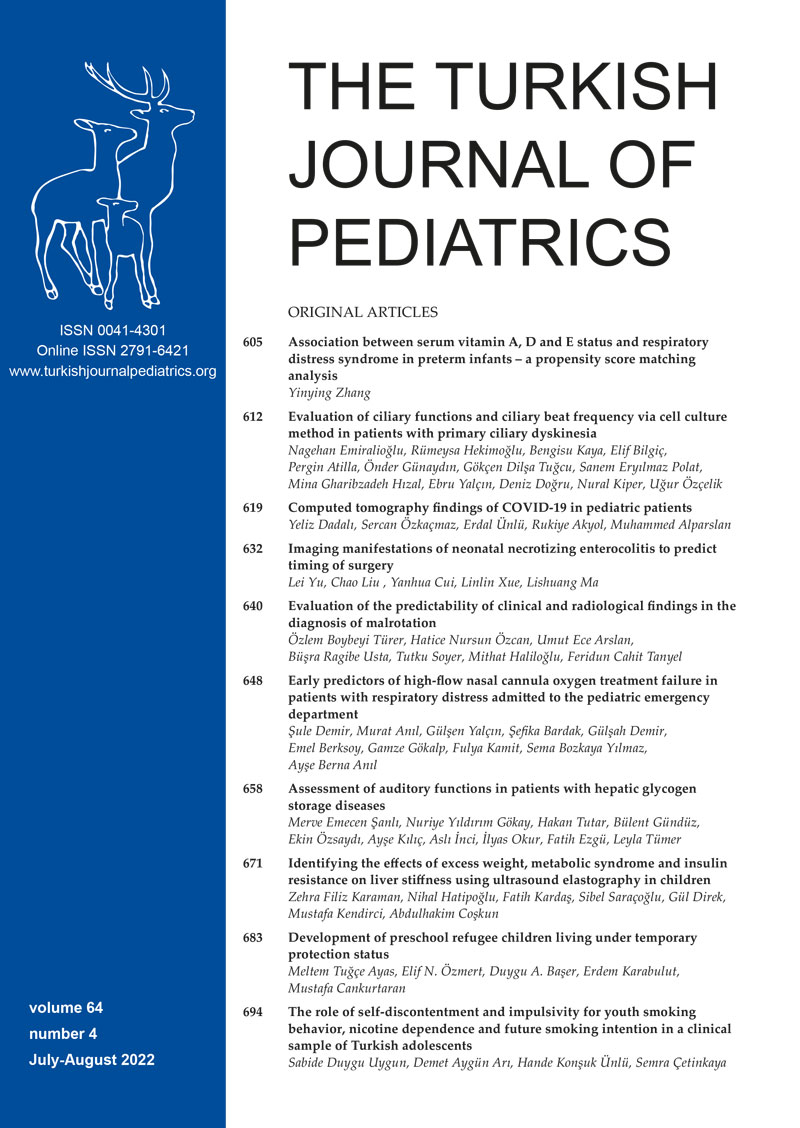Abstract
Background. High-flow nasal cannula (HFNC) therapy is a relatively new method used in patients with respiratory distress. The aim of the study was to evaluate the outcomes and to determine the baseline predictors of HFNC treatment failure in children with acute respiratory distress/failure in the pediatric emergency department.
Methods. Children with respiratory distress/failure aged 1 month to 18 years who underwent HFNC therapy with the pre-established protocol were retrospectively analyzed. HFNC therapy was used in respiratory and non-respiratory pathologies. HFNC failure was defined as the need for escalation to non-invasive ventilation or invasive mechanical ventilation. HFNC responders and non-responders were compared based on baseline clinical data.
Results. Of the 524 cases (median age:13 months; 292 males / 232 females), 484 (92.4%) had respiratory tract and 40 (7.6%) had non-respiratory tract pathologies. HFNC therapy was unsuccessful in 62 (11.8%) patients. The success rates were 81% and 55% in respiratory and non-respiratory diseases, respectively. In children with respiratory system pathologies, the pre-treatment venous pCO2 level (p: 0.045; OR: 0.958; 95%CI: 0.821-0.990) and the clinically important radiological finding on chest X-ray (lobar infiltration, atelectasis, pleural effusion) (p: 0.045; OR: 3.262; 95%CI: 1.178-9.034) were the most significant parameters in predicting HFNC failure. In children with non-respiratory pathologies, the pre-treatment venous lactate level (p: 0.008; OR: 1.558; 95%CI: 1.125-2.158) was a significant predictor of HFNC failure. There were no cases of pneumothorax or any other reported adverse effects related to HFNC therapy.
Conclusions. HFNC treatment is a safe oxygen therapy in children with respiratory distress/failure due to various etiologies in the emergency department. The lower venous pCO2 level increases and the clinically important radiological finding on chest radiograph decreases the success of HFNC treatment in respiratory pathologies. The higher venous lactate level is a predictor of HFNC treatment failure in non-respiratory pathologies.
Keywords: high-flow nasal cannula, oxygen therapy, pediatric emergency, respiratory distress
Copyright and license
Copyright © 2022 The Author(s). This is an open access article distributed under the Creative Commons Attribution License (CC BY), which permits unrestricted use, distribution, and reproduction in any medium or format, provided the original work is properly cited.














